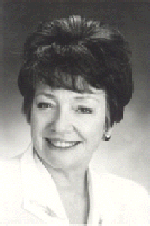
The five dissertations listed here illustrate my own research efforts in computer science education as reflected in the work of five of my graduate students in Computer Science Education.
A Quantitative Student Model for Intelligent Tutoring Systems: Student Programming Ability, Anchir Angel Syang, 1994.
Intelligent tutoring systems are made up of the subject matter to be taught,
a student model (the method of representing what a student knows and does
not know), and tutoring strategies. The purpose of this research was to
develop a quantitative model to measure programming abilities of students
who have completed the first course in computer science. This model could
then be used as the student model in an intelligent tutoring system. The
framework of the study was to analyze and compare several models, including
four from classical testing theory and one from item response theory.
Performance data was based on the responses of 315 students to 50 questions
covering the programming concepts of CS1 The course grade prior to the final
exam was used as the basis for comparing the different models.
The results showed that the model proposed in the study is feasible and
could be used to develop a computerized adaptive test based on item response
theory. Such a test could form the basis for a student model in an
intelligent tutoring system for computer programming.
The Effect of Closed Laboratory Activities on the Comprehension of Five Concepts and the Perception of Effectiveness of the Course in a Second Semester Computer Science Course,Debra Lynn Burton, 1992.
There are several possible definitions of closed laboratory; for this study
the following definition was used: an assignment to be completed within a
specified time period in a room of computers reserved for this purpose. The
issue addressed in the research was: Are closed laboratory activities
effective in improving the comprehension of computer science concepts?
The concepts measured in this experiment were algorithm complexity, stacks,
queues, recursion, and sorting. The experiment was conducted in CS2 classes
where there were large lecture sections and smaller weekly discussion
sections. For five of the fifteen weeks of the semester, half of the
discussion sections did closed laboratory activities on the week's concepts
while the other half did a comparable paper and pencil exercise. A pretest
was used to remove bias due to initial differences in comprehension. 125
students completed the study. The results showed no significant difference
in the comprehension of the five concepts between the students who
participated in the closed laboratory activities and those students who did
paper and pencil exercises.
Conceptual Models and Individual Cognitive Learning Styles in Teaching Recursion to Novices, Cheng-Chih Wu, 1993.
Most novice students have trouble learning recursion. The purpose of this
study was to examine whether the method of presentation (concrete or
abstract) affected how students learned recursion and to determine the role
played by the students' own learning styles.
The sample was made up of 209 students enrolled in a CS1 course. Each
student took the Kolb Learning Styles Inventory, which categorizes the
student's cognitive learning style as concrete or abstract. Two models of
presenting recursion were devised, one concrete and one abstract. The
students were tested over the material immediately following the lecture,
two weeks later, and six weeks later.
The results showed that concrete models were superior to abstract models and
abstract learners did better than concrete learners. No interaction effect
was found between a student's learning style and the presentation model.
Limitations in the Understanding of Mathematical Logic by Novice Computer Science Students,Vicki Lynn Almstrum, 1994.
This study sought objective evidence that computer science students have
more difficulty understanding concepts in the subdomain of mathematical
logic than they do in other areas of computer science. The data used for the
study were the multiple-choice questions of five Advanced Placement
Examinations in Computer Science.
There were two main parts to this study: determining which questions related
to logic and comparing student performance on those questions related to
logic and those questions with little or no relationship to logic. Thirty
eight university and high school instructors, most of whom taught at the CS1
level, participated in a content analysis of the questions. The results of
the content analysis were used to partition the questions into those
strongly related to logic and those not strongly related to logic. The
questions in the strongly related partition had lower means and standard
deviations than the questions in the not strongly related partition. The
difficulty distributions defined by the two sets of items were not the same.
These results substantiate the hypothesis that computer science concepts
related to logic are generally more difficult for novice students.
The Reasoning Ability and Achievement of College Level Students Enrolled in a Logic Class in Computer Science, Youngju Kim, 1995.
The Propositional Logic Test (PLT) is a 16-item instrument used to measure a
student's ability to use the propositional operations in conditional
reasoning. This research considered the following questions: What is the
relationship between a student's score on the PLT and his or her achievement
in a logic class and does taking a logic class improve a student's score on
the PLT?
The PLT was given on the first and last days of class in a logic course designed for computer science majors. The first day PLT score predicted the midterm grade (N = 163, p = .002) and the final course grade (N = 156, p = .005). Although the average score on the PLT improved from the first day (12.33) to the last day (12.95), there was no statistical difference before and after taking a logic class.